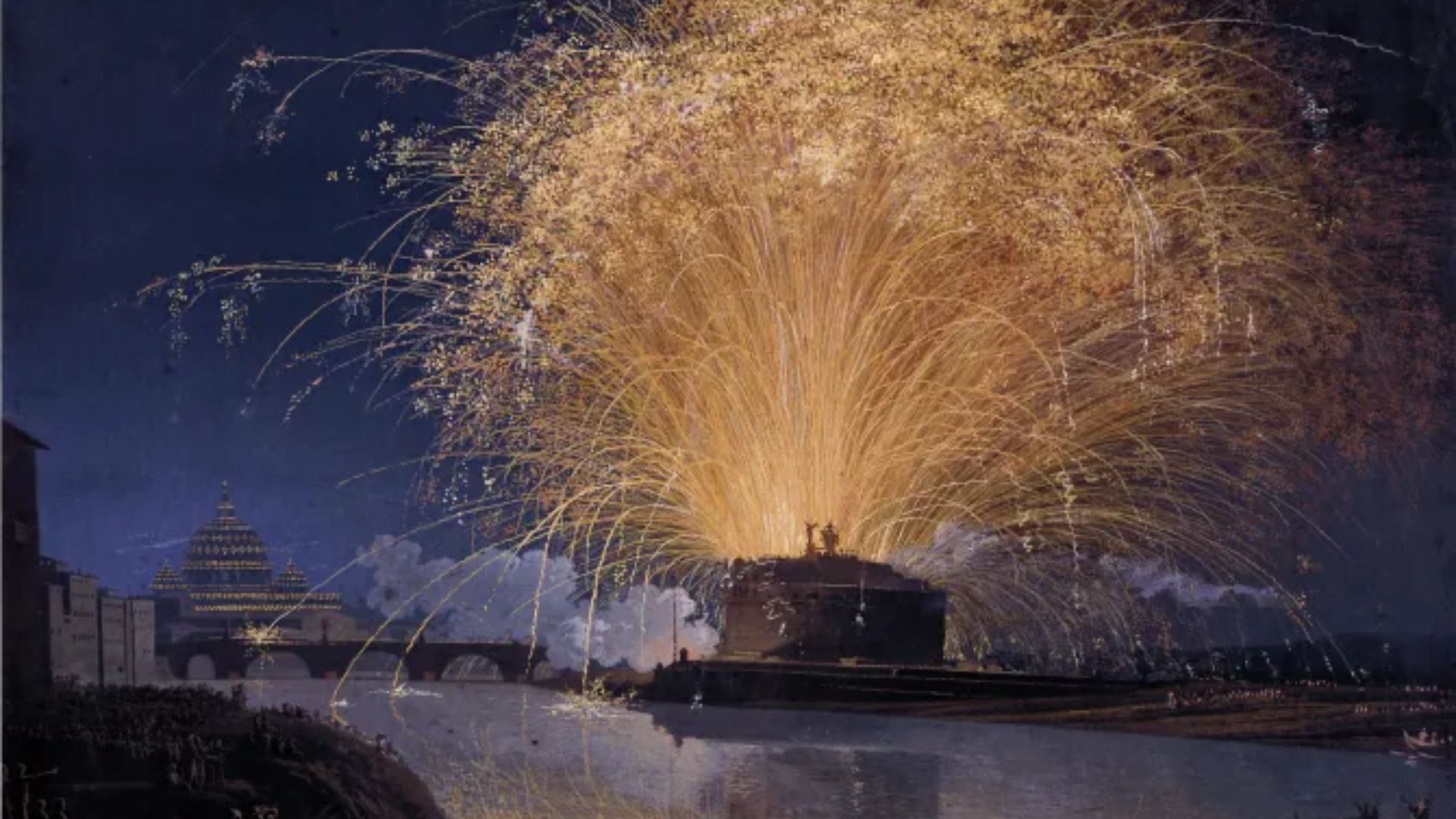Vatican City - For 500 years, the Vatican has marked the solemnity of Sts. Peter and Paul with a spectacular fireworks display inspired by Michelangelo and Gian Lorenzo Bernini.
While fireworks are often associated with the Fourth of July, the Vatican has been celebrating with them for nearly three centuries before America declared independence in 1776.
 A 1775 painting of the fireworks over Castel Sant’Angelo in Rome, painted by Jakob Philipp Hackert. | Credit: Public Domain
A 1775 painting of the fireworks over Castel Sant’Angelo in Rome, painted by Jakob Philipp Hackert. | Credit: Public Domain
Every June 29, fireworks are launched from Castel Sant’Angelo, the papal fortress commissioned by Roman Emperor Hadrian, to honor Rome's co-patron saints, St. Peter and St. Paul.
The fireworks show, known as “The Girandola,” has fascinated artists for centuries. The Metropolitan Museum of Art in New York features multiple images of the Vatican fireworks, including a 1579 etching by Giovanni Ambrogio Brambilla showing Castel Sant’Angelo ablaze while spectators watch from across the Tiber River.
Art historian Elizabeth Lev explains that the Girandola dates back to Pope Sixtus IV in 1481, who aimed to rival Venice and Florence with a grand display of lights and sound.
Pope Julius II continued the tradition in the early 16th century. His master of ceremonies described the fireworks as resembling “the sky itself tumbling down.”
There are debates about Michelangelo’s involvement in the fireworks, but evidence from Vannoccio Biringuccio’s 1536 book, “De La Pirotechnia,” suggests Michelangelo may have advised on color and effects.
The Vatican held the Girandola annually for Easter, Sts. Peter and Paul's solemnity, and papal elections. Gian Lorenzo Bernini, known for his Baroque sculptures and fountains, also designed fireworks.
In 1641, Bernini created fireworks inspired by the eruption of Stromboli, specifying rockets and colors for optimal effect.
 Sketch of the Girandola fireworks over Castel Sant’Angelo by Adrien Manglard c. 1750-1752. Credit: Adrien Manglard, CC BY-SA 4.0, via Wikimedia Commons
Sketch of the Girandola fireworks over Castel Sant’Angelo by Adrien Manglard c. 1750-1752. Credit: Adrien Manglard, CC BY-SA 4.0, via Wikimedia Commons
Charles Dickens witnessed the Girandola during his 1844–45 visit to Italy and vividly described it in his book “Pictures from Italy.”
The tradition paused in the late 19th century due to damage to Castel Sant’Angelo, but it resumed in 2008. Today, the fireworks illuminate Rome each June 29 as part of celebrations honoring its patron saints.
This year’s display took place at 9:30 p.m. on 29th June, concluding a day of festivities, prayers, and processions in Rome.